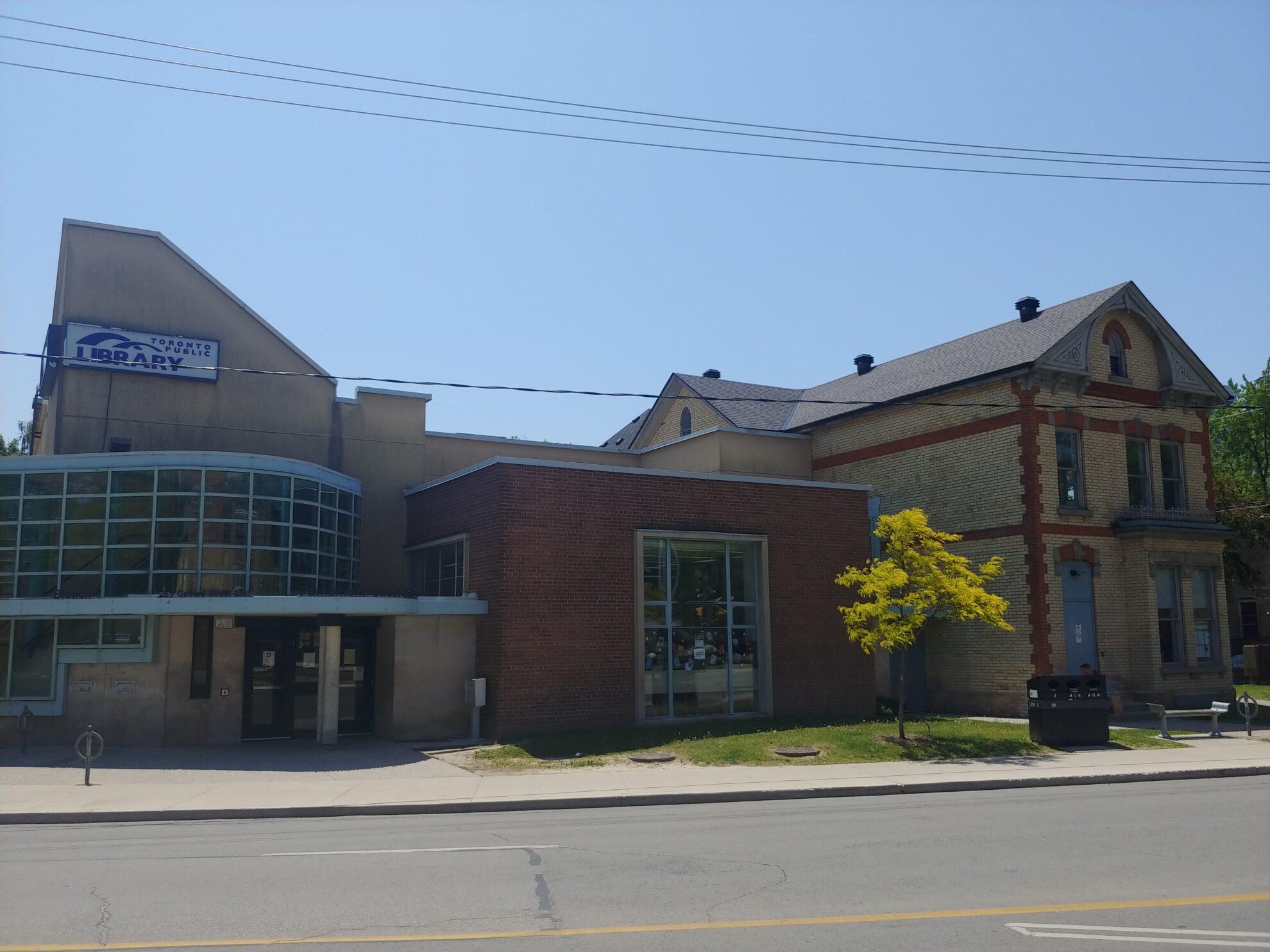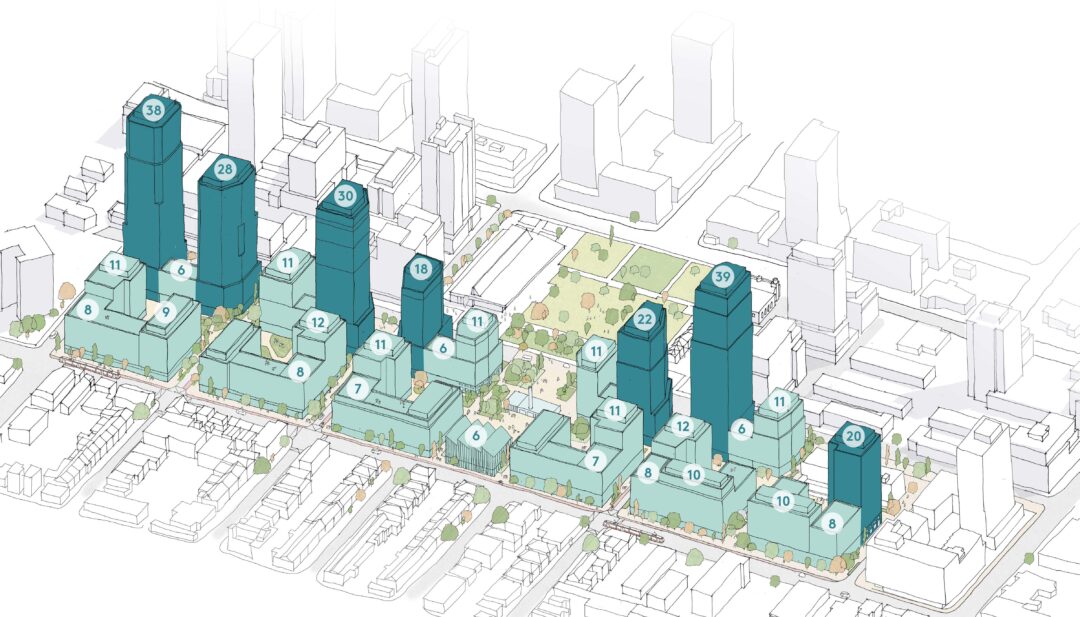By Andre Bermon –
The more information the community receives about the last two phases of the Regent Park revitalization, the more questions swirl around. The April 25 online consultation on the Phase 4/5 development was no exception.
Toronto Community Housing Corp. and Tridel Group, the public-private partnership looking to redevelop the last parcel of old Regent Park, are seeking rezoning from the City of Toronto (which owns TCHC). Their application proposes turning the low-rise Gerrard Street corridor, from Dreamers Way to River Street, into a high-rise, high-density avenue. Their desire to densify the parcel with over 3,000 units spread across 13 buildings translates into towers nearly 40 storeys high.
The “anchor” of this new development, as stated by Peter Zimmerman, TCHC’s director of development, is a new public library. The Parliament Street branch at Gerrard would be decommissioned and a brand-new two-storey library built two blocks further east on the south side of Gerrard near Sumach Street.
The two applicants believe relocating an existing public asset instead of commissioning something of their own benefits the wider community, apparently because the Toronto Public Library would be paying for and building the new branch.
Upzoning the Gerrard Street land will tap two sources of community benefits from the developer: one through the city’s Section 37 fund (the Community Benefits Charge), and the other a $26.8 million community benefits agreement. The community is currently being consulted about the agreement, while the Section 37 charge will be negotiated closer to finalization of the rezoning.
Aside from these important provisions, residents on the consultation were concerned that public space and soft infrastructure improvements will lag behind intensification. Of the 6,287 square metres of proposed community-use space, a third, 2,227 square metres, is earmarked for the library.
For TCHC and Tridel, moving the library would avoid implementing (and paying for) additional community/cultural space in Regent Park. However, the city could use the Section 37 charge to do more in the public realm than the developer currently proposes.
The Toronto Public Library’s 2019 Facilities Master Plan identified the Parliament branch as a priority for major capital work. A score card analyzing criteria such as property condition, service levels, neighbourhood growth and walkability gave the branch a “poor” rating. Based on the master plan recommendation to relocate or expand the existing facility, TPL’s Board has already approved funds for the capital work.
Measuring 1360 square metres, the Parliament Branch was built in 1969, with major renovations in 1992 and again in 2010. It incorporates a heritage building on the northwest corner known as the Edwin Hough House that is on Toronto’s Heritage Register, giving it some protection against demolition.
The branch’s heritage asset appears to be the reason TPL decided on relocation. As TPL media spokesperson Ana-Maria Critchley said renovating and expanding the existing library “would be as costly as building new, if not more, because of the heritage building.”
But she admits that “a deep analysis of cost differentials has not been completed,” before TPL decided to abandon an important piece of civic infrastructure with historic ties to the Cabbagetown South community. Neither the city nor TPL has publicly stated what they will do with the old library space and heritage building once the replacement branch opens in Regent Park.
TPL’s newly adopted build specifications would be easier to achieve if the replacement branch is located elsewhere, which would also allow the current library to remain open during construction. The alternative of expanding the existing site would mean closing and or limiting library service from the branch for two or three years, a significant loss.




